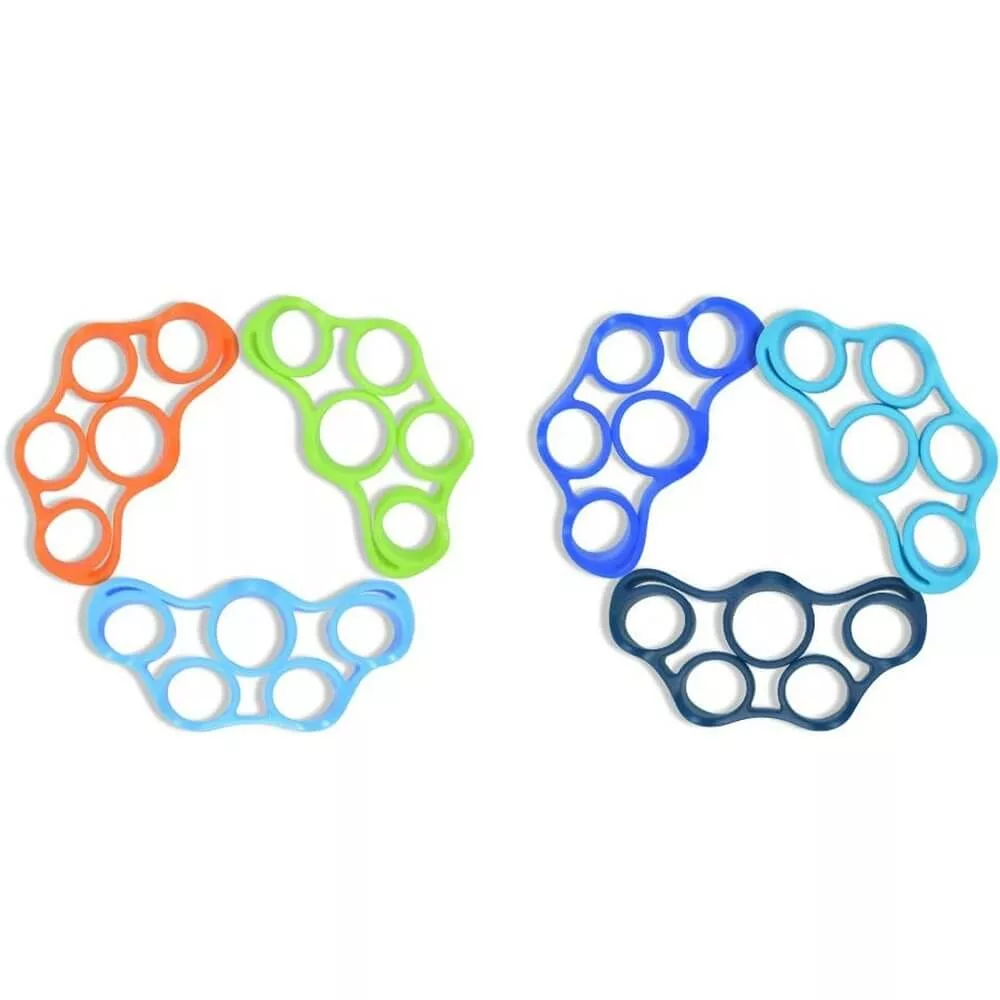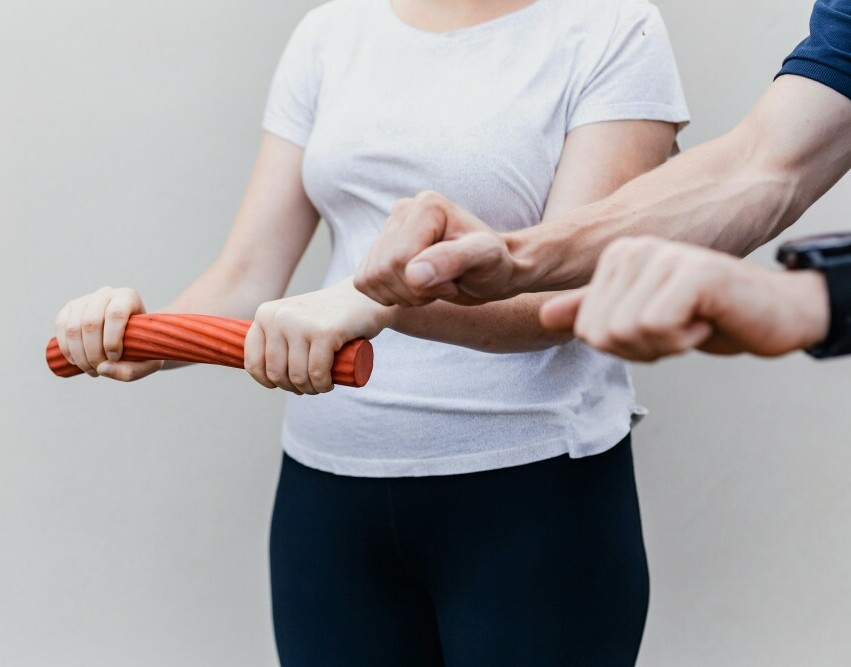(Last Updated on October 9, 2025 by Henry)
I’m going to walk you through the common grip injuries that many people tend to overlook until they strike. You might be surprised to know just how often these injuries crop up, from athletes to office workers to weekend warriors.
The usual suspects include strains (an overstretched or torn muscle), sprains (injuries to ligaments), and ever-so-annoying tendonitis (inflammation of the tendon).
It’s important to know what you’re dealing with because each comes with its own set of pesky symptoms.
Pain, weakness in the grip, stiffness when moving the fingers, and swelling around the wrist and hand are telltale signs. Ignoring these symptoms is a no-go.
It might be tempting to ‘push through the pain,’ but undiagnosed or untreated grip injuries can lead to chronic problems and even permanent damage.
Believe me, that’s the last thing you want on your plate. Catching these issues early is key. A correct diagnosis paves the way for appropriate treatment and gets you back to your A-game faster.
So, if your hands are trying to tell you something, maybe it’s time to listen. You might be wondering: how does a strong grip come into play here? Let’s unpack the complex world of our hands in the next section. I’ll cover how they’re structured, how this affects grip strength, and why maintaining that strength is a big deal for your overall health.
The Anatomy of a Strong Grip: How Our Hands Work
I’m going to take you through the intricate machinery of the hand and wrist, which is essential to understanding how we grasp, hold, and manipulate objects. The hand, a marvel of biological engineering, is composed of numerous small bones, muscles, tendons, and ligaments that work in harmony.
To appreciate the mechanics of grip, let’s first look at the skeletal structure. Your hand has 27 bones, including the carpal bones in the wrist, the metacarpals of the hand, and the phalanges of the fingers. These bones form joints that allow for a wide range of motion.
Now, what powers the movement? Muscles in the forearm attach to the fingers via long tendons, acting like cables to control their function. The intricate movement of flexing, extending, and rotating your wrist and fingers is thanks to this muscular-tendon partnership.
Ligaments, the strong connective tissues, help stabilize the hand’s structure. They connect bones together and ensure that the joints move in appropriate directions. Without them, our grip strength would be significantly compromised, and we’d be prone to dislocations.
The role of grip strength isn’t just tied to opening jars or hanging from pull-up bars. It’s a marker of overall health. Studies indicate that a robust grip can be a sign of cardiovascular health and longevity, showcasing the hand’s potential as an indicator of general wellness.
I’ll also share a curiosity that resonates with me: our palms and fingers have one of the most sensitive touch feedback systems in the body. This fine-tuned sensory feedback is essential for adjusting the force of our grip and is part of why our hands are so versatile.
Understanding these details paints a clear picture of the hand’s complexity and why protecting it is paramount. And that segues perfectly into our next discussion: the common causes of grip injuries and how you can safeguard your hands with smart prevention strategies.
Common Causes of Grip Injuries and Prevention Strategies
Grip injuries might not sound like a big deal, but they can sideline you from your daily routine faster than you can say ‘ouch’. Let’s walk through some common culprits of these pesky setbacks and how you can wave them goodbye before they even say hello.
You’re going to find out about how regular activities, like typing away on your keyboard or pushing a lawnmower, could be setting you up for grip injuries. Repetitive motions are often to blame, leading to conditions such as carpal tunnel syndrome or tendonitis.
I’m going to touch on sports and fitness. Did you know that weightlifting, tennis, or even golf can strain your precious grip if not done correctly? It’s all about technique, using the right equipment, and giving your hands the respect they deserve.
Then there’s the workplace angle. If your job keeps you glued to a device, I’m here to help you with practical ergonomic adjustments. This isn’t just about comfort; it’s also about long-term hand health.
But don’t worry too much about these risks – there’s a whole host of savvy strategies to keep your hands happy and healthy. This includes warming up your hands and wrists before you dive into any activity that demands a lot from them.
In my opinion, learning to listen to your body’s signals is crucial. That little twinge or niggle in your hands? It might be time to ease up. And remember, a solid pair of gloves might just be your new best friend for those heavy-duty tasks.
Lastly, let’s not forget the power of rest. Mixing up your activities to give your hands a break can work wonders. And if something hurts, it’s your body’s way of saying, ‘Hey, I need a time-out’. Pay attention to that.
This leads us to rehabilitation and recovery. Because if an injury does sneak up on you, knowing how to bounce back effectively is key. So, gear up to learn about the road to recovery and how you can emerge with a grip that’s stronger than ever.

Why are Handbands Staple to Build Hand Muscle Balance?

Fancy Finger Exerciser to Build Functional Grip Strength

Fun & Affordable Way to Rehab Weak Hands

Avoid Elbow Pain with Simple Finger Exerciser
Rehabilitation and Recovery: Returning to Full Grip Strength
After a grip injury, you might be eager to regain strength and return to your normal activities. That’s understandable, but it’s crucial to approach rehabilitation with patience and care to ensure a full recovery.
If you’re dealing with minor grip discomfort, home remedies such as rest, ice, compression, and elevation (RICE) are often effective first steps. Over-the-counter pain relief can also help, but if the pain persists, it may be time to consult a healthcare provider.
When professional intervention is needed, the offerings range from conservative treatments like physical therapy to more intensive options such as surgery for severe cases.
Your healthcare provider will guide you on the best course of action based on the specific nature of your injury.
Recovery times can vary broadly, depending on the severity of the injury and the treatment method.
What’s key is adhering to the prescribed rehabilitation program and not rushing the process.
Skipping steps or returning to high-intensity activities too soon can increase the risk of re-injury. Physical therapy may include a variety of exercises and tools designed to restore function and rebuild strength safely. Grip strengtheners, therapy putty, and finger stretchers are just a few examples of aids that might be used in your rehabilitation.
Once you’re cleared to resume activities, come back gradually. Start with lower weights, less intensive grip demands, and shorter durations, then slowly work your way up. This progressive approach allows your grip to adjust and strengthens it responsibly.
Remember, your first attempt at returning to full strength doesn’t need to be your last. If something doesn’t feel right, don’t worry too much about taking a step back. Re-assessing with your healthcare provider can help fine-tune your recovery plan.
In my opinion, a well-managed recovery plan is your best bet for not only regaining full grip strength but potentially coming back even stronger. Be consistent with your exercises, stay communicative with your health professionals, and most importantly, listen to your body.
Thanks for Stopping By
Have Questions?
Please Leave A Comment











